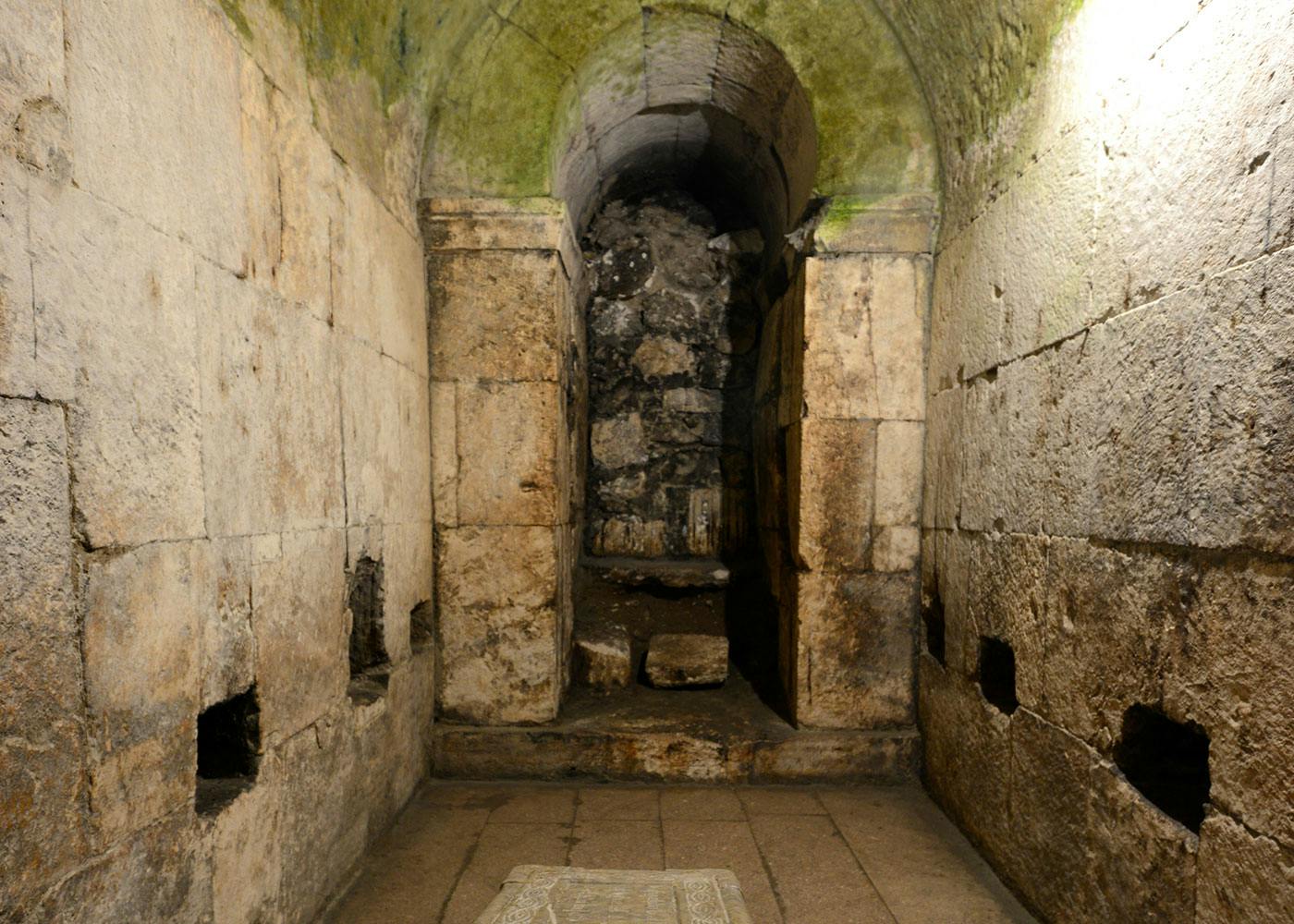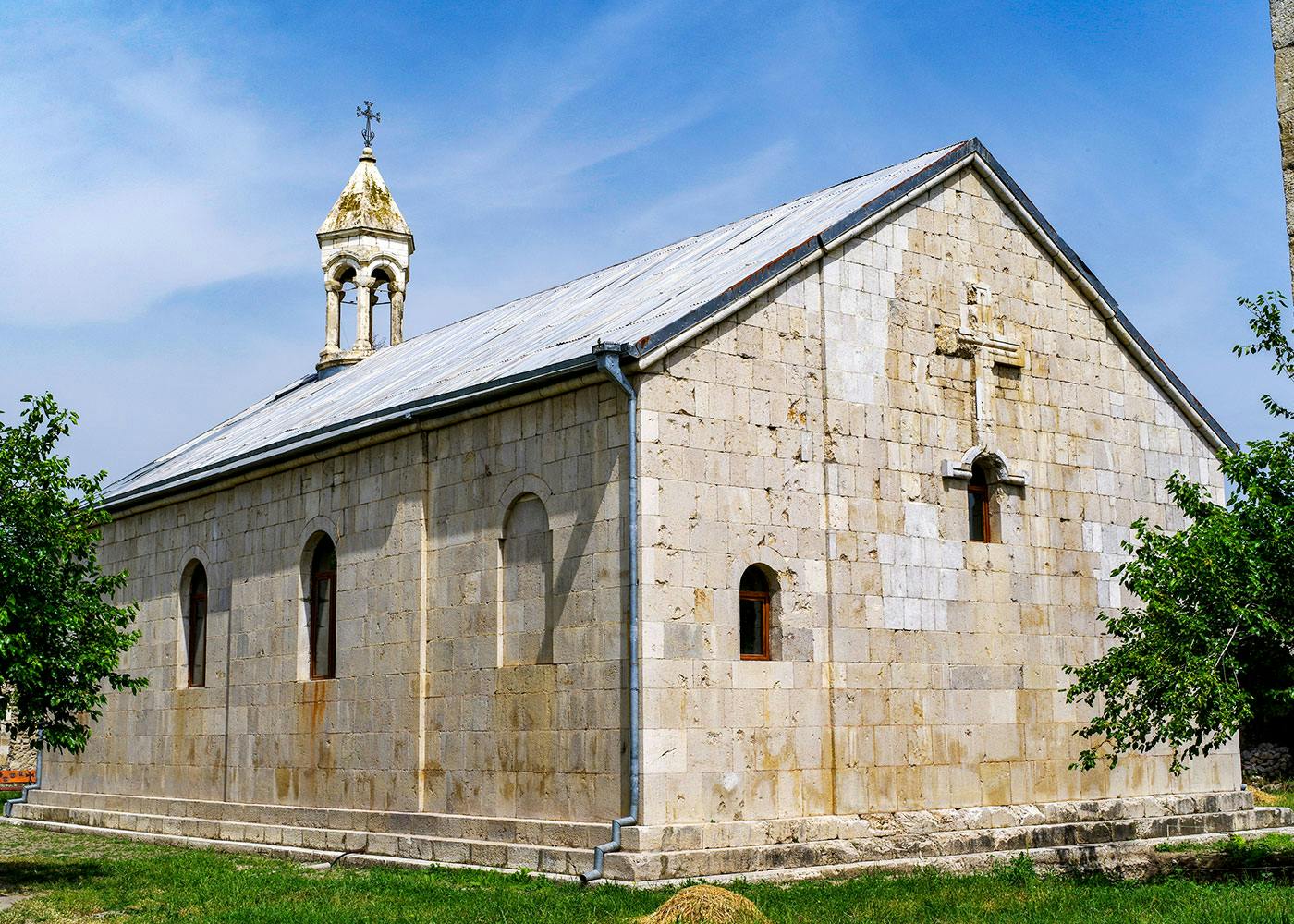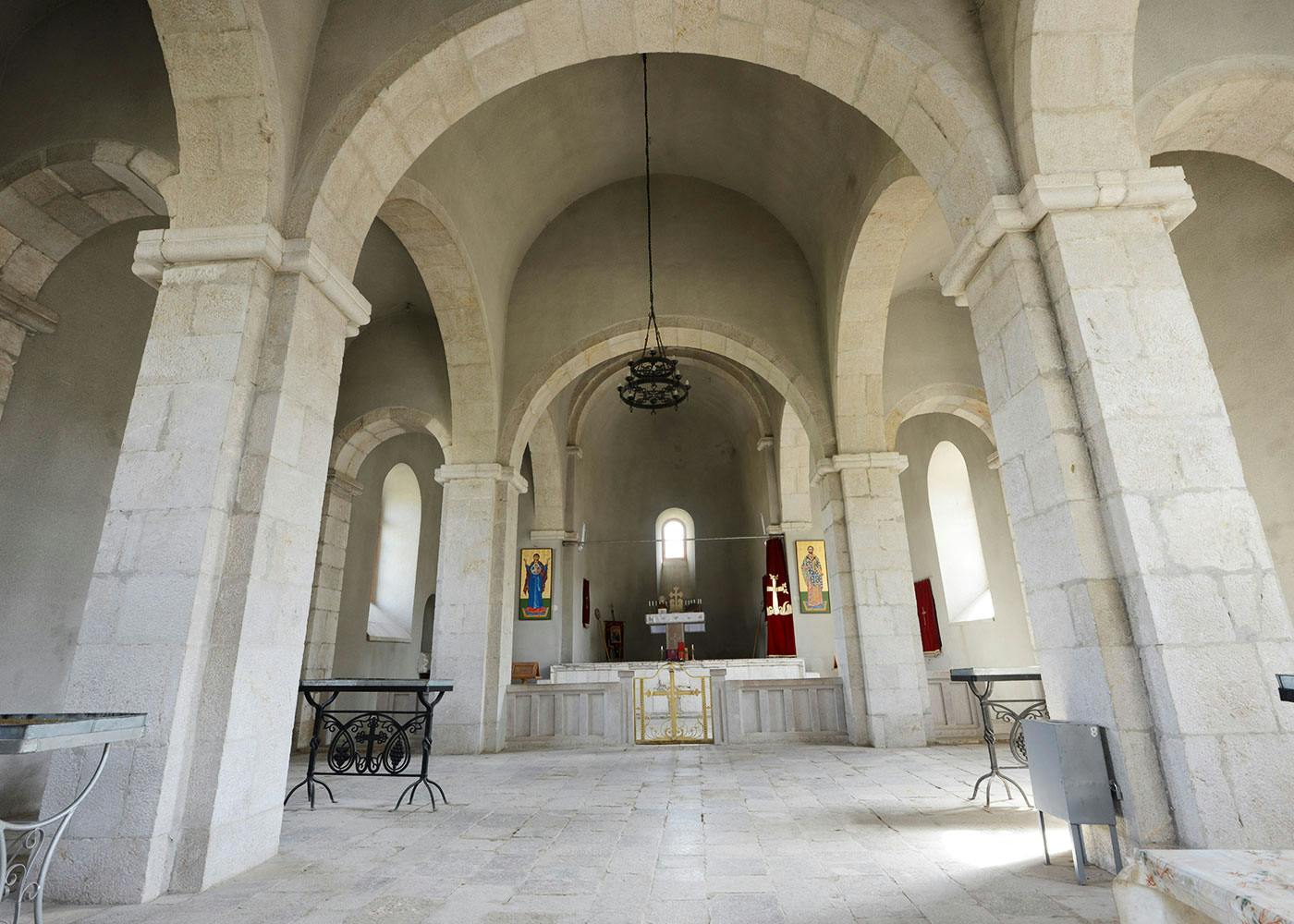Amaras monastery is intricately linked to the establishment of Christianity in Armenia. It was founded in the fourth century by Saint Gregory the Illuminator, the evangelizer and patron saint of the Armenian Church. It would later become the burial place of his grandson, Saint Grigoris. Saint Grigoris, only 15 years old when he was sent on his evangelical mission,[1] was martyred in AD 338 while spreading Christianity in the territory of Caucasian Albania.[2] Saint Grigoris served as the first head of the Church of Caucasian Albania,[3] and his resting place at Amaras became a pilgrimage site, considered one of the most important shrines in Karabakh.[4]
Above: Listen to the Abbot of Amaras monastery, Father Geghard Hovhannisyan, share his reflections on the power of prayer and presence at the holy site.
Left: Tomb of Saint Grigoris
Right: Portal of the tomb of Saint Grigoris with early Christian sculptural decoration
The walled complex at Amaras houses a large basilica underneath in which lies Saint Grigoris’s reliquary chapel.[5] Recent archaeological excavations show this chapel could be entered from the east, quite unusual in the context of traditional church architecture, but which scholars see as a possible reference to the layout of the Church of the Holy Sepulchre in Jerusalem.[6] The sculptural reliefs form part of the repertoire of early Christian art, including images of palm trees and crosses. The monastery is surrounded by a perimeter of fortress walls.
Amaras is also revered as the home of the first Armenian language school, established by Saint Mesrop Mashtots after the creation of the Armenian alphabet in the early fifth century. According to the accounts of his student Koriun, written from 442 to 448, Saint Mesrop invented the Armenian, Georgian, and Albanian alphabets in order to evangelize throughout their lands.[7] The Armenian and Georgian alphabets he created are still in use today; the Caucasian Albanian language faded over the centuries, but its alphabet survives through an Armenian manuscript dated from the year 1442[8] and two palimpsest manuscripts discovered in Saint Catherine’s Monastery at Mount Sinai, Egypt.[9]
Saint Mesrop is revered by Armenians for creating their alphabet, which enabled the translation of the Bible, spread the word of Christianity, and gave rise to a unique literary tradition. The illuminated manuscripts of the Armenian Church — ornately decorated Bibles and religious texts — remain a subject of study and fascination today.[10]
Left: Amaras monastery from southeast
Right: Amaras monastery facing east



